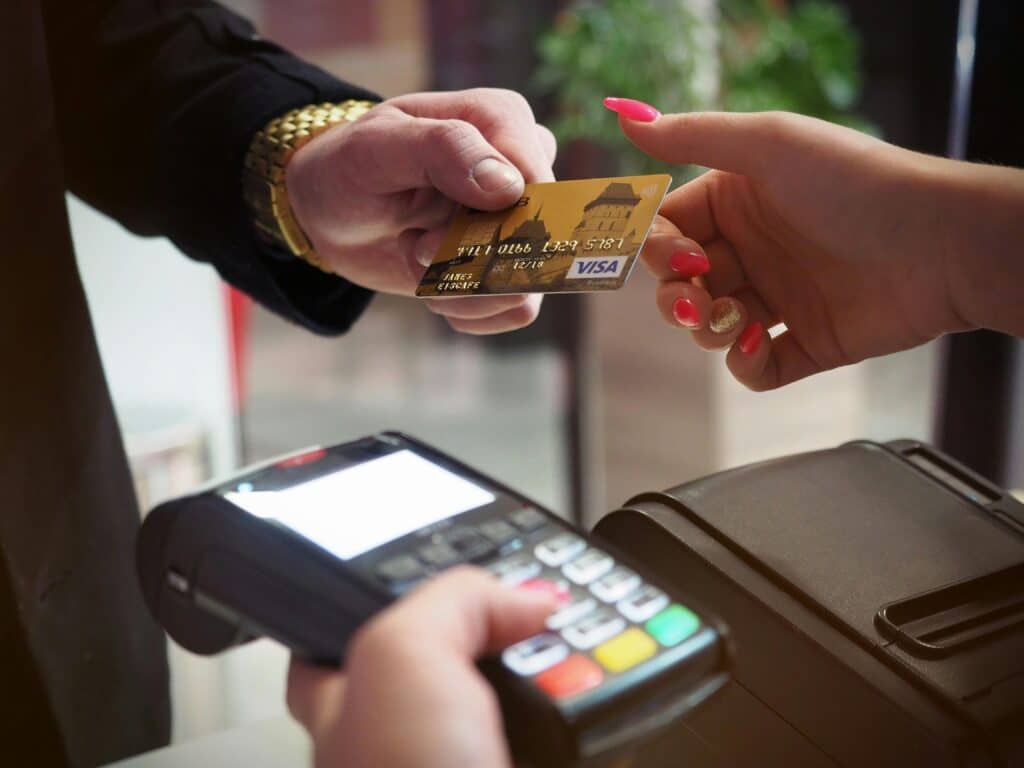- Uncover the various types of credit card processing, from basic purchases to advanced balance transfers.
- Explore the nuances and benefits of different credit card transaction types.
- Understand how to effectively manage and optimize each type of credit card processing for financial well-being.
Introduction
| Transaction Type | Average APR | Notes |
| All Credit Card Accounts | 14.87% | Average APR for all accounts |
| Accounts Assessed Interest | 16.88% | Specific for accounts assessed interest |
| Cash Advance | 17.99% – 29.99% | Varies; higher APR compared to regular purchases |
| Balance Transfer (Introductory Period) | 0% | Introductory period lasts 12 to 21 months |
| Balance Transfer (Post-Introductory) | Varies | Typically higher than the introductory offer |
Understanding the types of credit card processing and the various credit card transaction types is essential for both consumers and businesses.
This guide provides a clear and straightforward explanation of the different types of credit card processing and transaction types, helping you make smart choices in your financial activities.
It offers valuable insights into each transaction type, outlining their features, benefits, and how they fit into the broader financial landscape.
Basic Credit Card Transaction Types
Purchase Transactions
- Ubiquity and Simplicity: Purchase transactions are the most common type of credit card processing, known for their straightforward method of exchanging goods or services for payment, making them a staple in daily commerce.
- Speed and Convenience: These transactions offer quick and efficient payment solutions, allowing seamless and hassle-free purchases and catering to modern consumers’ fast-paced lifestyles.
- Security and Consumer Protection: Credit card purchase transactions come with enhanced security measures and strong consumer protection policies, ensuring safe and reliable transactions and safeguarding against fraud and unauthorized use.
Purchase transactions, a fundamental aspect of credit card processing, are characterized by their simplicity and ubiquity. They primarily involve a direct exchange where consumers use their credit cards to acquire goods or services.
This process is integral to modern commerce due to its convenience, speed, and security, making it a preferred transaction method for merchants and customers. These transactions are backed by robust consumer protection policies, ensuring a safe and reliable shopping experience.
Cash Advances
- Accessibility of Funds: Cash advances provide cardholders with immediate access to cash up to a certain limit, offering a convenient solution for urgent financial needs or when direct card payments are not feasible.
- Higher Costs and Interest Rates: These transactions often come with higher interest rates and additional fees than regular credit card purchases, making them more expensive to access cash.
- Financial Implications: Opting for cash advances can have significant financial implications, including the potential for increased debt and impact on credit scores, making it important for cardholders to consider these factors and use this option judiciously.
Cash advances represent a crucial yet costly feature of credit card usage, allowing cardholders to withdraw cash up to a specified limit.
While they provide immediate financial liquidity when direct card payments are impossible, they are accompanied by notably higher interest rates and additional fees.
This makes cash advances a more expensive option compared to standard credit card transactions.
Consequently, users need to carefully consider the financial implications, such as the potential for increased debt and the impact on their credit score, before opting for this service.
Balance Transfers
- Interest Rate Savings: Balance transfers can provide substantial savings through lower interest rates, especially during introductory periods.
- Debt Management: They offer an effective way to consolidate credit card debts, simplifying financial management and payment tracking.
- Awareness of Fees and Rates: It’s important to understand the transfer fees and the standard interest rates post-introductory period to avoid unexpected costs.
Balance transfers involve shifting debt from one credit card to another, often to benefit from lower interest rates.
This strategy can lead to significant savings on interest payments and help manage debt more effectively. However, knowing potential transfer fees and the regular interest rates that apply after any introductory period is crucial.
Careful consideration and planning are key to making balance transfers work to your advantage, helping to consolidate debt and streamline payments.
Interest Rates Comparison Among Different Credit Card Transaction Types.
Credit card interest rates can vary significantly depending on the type of transaction. Here’s a comparison of interest rates among different credit card transaction types, such as purchase transactions, cash advances, and balance transfers:
- Purchase Transactions: The interest rate for purchase transactions, also known as the purchase Annual Percentage Rate (APR), is the rate applied to purchases of items and services. The average APR for all credit card accounts is around 14%. However, the actual rate can vary depending on the card and the cardholder’s credit score. For instance, a consumer with excellent credit might receive a 14% APR, while a consumer with bad credit might receive a 24.99% APR.
- Cash Advances: Cash advances typically have a higher interest rate than purchase transactions. Many cards charge 29.99% or higher rates on cash advances. However, some cards offer lower cash advance APRs. For example, the Star One Visa Signature Rewards Card has a cash advance APR of 8.75%, and the PenFed Platinum Rewards Visa Signature® Card also offers a low cash advance APR.
- Balance Transfers: Balance transfers involve moving debt from a high-interest credit card to a new card with a lower interest rate. The balance transfer APR is the rate that applies to the transferred balance. Balance transfer APRs tend to be the same as the purchase APRs. However, many credit cards offer promotional 0% APR periods for balance transfers, lasting 6 to 21 months. For example, the Wells Fargo Reflect® Card offers a 0% intro APR for 21 months on qualifying balance transfers.
It’s important to note that these rates can vary significantly based on the cardholder’s creditworthiness and the specific terms of the credit card. Other fees, such as balance transfer fees, cash advance fees, and late payment fees, can also apply and should be considered when comparing different credit cards.
Advanced Credit Card Transaction Types
Advanced credit card transaction types go beyond the basics, offering more complex and specialized financing options. These types of transactions cater to specific needs, such as regular bill payments, international purchases, or correcting transaction errors.
Understanding these advanced options is key to taking full advantage of your credit card’s capabilities, whether for personal or business purposes. They provide flexibility and convenience but require a good grasp of their terms and conditions to use them effectively and avoid potential pitfalls.
- Recurring Transactions
Recurring transactions are automatic payments set for regular intervals. This segment will cover their use in subscriptions and bill payments and how they affect financial planning and budgeting.
- Foreign Currency Transactions
Foreign currency transactions occur when purchases are made in a currency other than the card’s billing currency. We’ll delve into exchange rates, fees, and tips for minimizing costs while transacting in foreign currencies.
- Balance Refunds and Returns
This section addresses the balance refunds and returns process, exploring the policies, timeframes, and consumer rights involved in reversing a credit card transaction.
Specialized Credit Card Transaction Types
- Contactless Payments
Contactless payments represent the future of credit card transactions, allowing for quick, secure payments. We’ll examine their technology, security features, and rapidly growing popularity.
- Ecommerce Transactions
Ecommerce transactions are online purchases made through websites or apps. This part will focus on their security protocols, consumer protection, and the role of payment gateways.
- Pre-authorized Payments
Pre-authorized payments are a convenience for regular bills or subscriptions. We’ll discuss their setup, modification, cancellation processes, and potential issues like unauthorized transactions.
FAQ
What are interchange fees associated with?
Interchange fees are transaction fees the merchant’s bank pays the cardholder’s bank. They are part of the processing costs for credit card transactions.
What are the rules on contactless payments?
Contactless payments have limits on the transaction amount and often require no PIN for small purchases. However, they follow strict security protocols to ensure safe transactions.
What is an example of a cash advance payment?
An example of a cash advance payment is when a credit cardholder uses their card to withdraw cash from an ATM, which typically incurs higher interest rates and fees.


